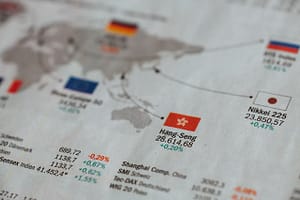Fail to prepare, prepare to fail. It’s a little strong as advice goes but, typically, planning ahead and having a decent idea of what you’d like to achieve from a certain endeavour is rarely a bad thing, and is especially true in trading. Starting out, you can have the capital, you can select your trading platform and you can understand the terminology, but without a strategy in mind, you open yourself up to all sorts of unwanted outcomes. You might expose yourself to more risk than you’d like, or too little. You might find yourself not set for the long-term or making decisions too quickly.
Understanding and applying a strategy that fits your daily schedule and allows you to funnel your capital in a way that suits your goals is fundamental. It’s highly useful to explore the most common types of strategy in educational features available on trading platforms like Trade360, which break down even the more complex styles, into usable information for a beginner.
It’s a complex world and any trader worth their salt won’t even consider that first purchase or sale without an inkling of where that decision should take them. If you are starting out, a strategy sounds a little intimidating. So, we’re exploring some of the most common strategies available to you as you begin your journey into trading.
Price action trading
Price Action is one of the simplest approaches in theory. Essentially, it comes down to studying historical prices and building your strategy based on those readings. Its strength is in its flexibility, in that price action is applicable as a single strategy or in combination with other strategic approaches, and often is. In addition, it can be deployed over any time period, from very short to longer-term, and allows several timeframes to be used as part of the analysis, which makes it a highly popular approach for traders.
Range trading strategy
Range trading is more nuanced in its analysis, identifying resistance or support points, which help traders make informed decisions around those readings. Range trading is particularly attractive in markets that are historically less volatile and often exhibit no distinct trends. Its limitation is in the need for technical analysis, something that the average person might have access to. Similar to price action, there’s not a significant timeframe this approach can be applied within, however, breakouts can occur, and so risk management is usually highly encouraged.
Day trading strategy
Day trading does what it says on the tin, and is a popular choice for the trader who can dedicate time in a given day to operate. It’s simple, featuring the trading of assets within a single trading day. The aim is to close all of one’s positions by local market close, whether it’s a single trade or multiple over the day. These trades can come down to hours, even minutes, in length, which requires the trader’s focus and awareness of risk positioning from the market open to a day’s end.

Carry trade strategy
The global nature of markets like forex are great places to apply approaches like carry trading. This is essentially the borrowing of one currency, at a lower rate, and gaining a high yielding rate off of another currency. You’ll almost always apply this in forex specifically, but it can apply to other financial markets. The goal is the positive carry of said trade. The limitations are largely in carry trading’s reliance on the ever-changing interest rates, meaning it usually applies best in middle to longer-term outlooks, over months or years.
Markets that trend very strongly are better for carry trades, which illustrates the longer time frame that is applied. It’s an attractive strategy to those who don’t have the time of a day-trader, and it manages risk well, compared to others. Its downsides include the lower number of opportunities to trade, by virtue of forex trading structure (one currency for another) itself, and really suits currency markets over most others.
So, considering the different trading strategies in relation to goals, requirements, risk appetite, and the amount of time and capital available to invest, which strategy is the best for you?






Leave a Comment